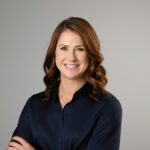Diversity, Equity, and Inclusion in Beauty
Historically, diversity, equity, and inclusion in beauty has not been at the forefront for the beauty industry. Target audiences have been narrowly defined to maximize engagement and market penetration, but as a result, many potential makeup and skincare customers have been excluded. For example, fairer skinned customers may have 10-15 shades of foundation, while darker skinned customers may only be offered 2 or 3. Packaging and marketing for makeup and other beauty products are also very strongly gendered, whether they be for “for men” or “for women”, excluding those with nonbinary gender identities.
Diversity, Equity, and Inclusion in Beauty
When Rihanna launched Fenty Beauty in 2017, the wide and inclusive shade range posed a challenge to existing beauty industry giants. The transformative intention of “beauty for all” as a brand tagline signaled an innovative and diversity-driven strategy that shook the industry. Not only did the product itself appeal to a wider consumer base, but the inclusive messaging and marketing surpassed precedent. Underrepresented groups that were previously overlooked now had access to affordable beauty products that met their unique needs. Fenty Beauty also demonstrated a commitment to diversity and inclusion in beauty beyond its product lines, and in alignment with the greater corporate social responsibility movement. The brand has partnered with the Clara Lionel Foundation to address issues including global warming, poverty and hunger, and social justice. Making diversity and inclusion awareness the core of their business has been integral to the brand’s success and created sustainable engagement and authentic customer loyalty. Following the success of Fenty beauty, many heritage beauty brands have introduced more expansive shade ranges across their product lines, including popular drugstore brands Maybelline and L’Oreal.
In light of the recent violent attacks against the Asian American and Pacific Islander (AAPI) community it is imperative that the beauty industry and its leadership responds. As society’s perception of discrimination continues to shift, businesses and consumers alike have begun to recognize the magnitude of racism, especially after violent instances. While many beauty brands are vocally expressing their condemnation of anti-Asian hate and donating to related organizations, mirroring their calls to action last summer during the Black Lives Matter resurgence, few have made significant operational changes to be more diverse or inclusive internally or in their external product offerings.
For example, beauty brands have continually capitalized on Asian skincare tools and techniques, but it is debatable whether this is a sign of appropriation or appreciation. Today’s market displays sheet masks and essences (innovations from South Korea), Gua Sha stones and jade rollers (ancient beauty tool exports from China) and rice water (which dates all the way back to Japan’s Heian period.) Not only are beauty companies utilizing culturally specific practices without acknowledgment of their history, but the related beauty service economy is built on the foundation of Asian labor without providing due credit, with many women—primarily women of Vietnamese descent—working long hours for little pay in salons and spas.
Centering Product Design on Inclusivity
Although many brands have recognized that it is necessary to communicate support and advocacy for Black, Indigenous, and People of Color (BIPOC), few have integrated it into their strategic planning. Quite frankly, there is a design gap; true inclusivity entails product integration and targeted consumer enhancement. Beauty brands should no longer be segmenting consumers based on gender or race, but more holistically by interests, style, and location demographics. Customer segmentation can be a powerful tool which results in top-line growth and achieve inclusivity in beauty if done correctly but can also be a major detriment if not.
While it is appropriate to create a skincare product designed to enhance skin appearance, it is no longer acceptable to imply that people of different genders or racial demographics cannot or should not use a product. If so, options specifically developed for each group should be available. For example, Aveda carries a wide variety of hair products for different hair types, including for men, natural textured hair, and color care. Within these categories, they have created product lines tailored people with different situations and needs. Living proof has also come out with a new ‘curl’ collection aimed to enhance all curl types. While personalization is becoming more mainstream in beauty and personal care, it is also important that brands recognize the potential implications of customer segmentation. When customer segmentation gets too specific, brands lose their ability to be number in their direct-to-consumer marketing. In today’s rapidly evolving market, this could be a costly competitive disadvantage. Broadening target markets is a win-win: consumers get what they want, and companies win their dollars.
Three key growth areas in beauty products include:
- Haircare: Black haircare needs must be addressed by large beauty organizations. Brands such as Taliah Waajid, Camille Rose and Alikay Naturals are at the forefront of the movement.
- Skin care: Men have been historically excluded from skin care target marketing, thus gender-neutral skin-care is on the rise. Even sunscreen has appeared as a major area for growth. Sunscreen often leaves a white cast which can wash out darker skin tones. Companies like SuperGoop and Black Girl Sunscreen have developed products that leave no cast but retain effective UV protection.
- Makeup: Current makeup trends evolved from Drag/Ballroom looks, but little representation or inclusion in beauty has been expanded in the community, despite increased visibility in mainstream pop culture via shows like FX’s Pose.
Corporate Racial Justice and Corporate Social Responsibility
DE+I efforts should not be limited to isolated initiatives but should instead be engrained in the organizational DNA from the top down. DE+I strategy communicates a company’s level of commitment to corporate racial justice and the greater Corporate Social Responsibility effort. CSR is not only becoming an attractive area for investors, but also for consumers. A brand’s commitment to sustainability is highly noticed by younger generations. People no longer care about the item they are buying alone, but also who is selling it and how they do business. For example, much of what made Fenty beauty successful is a direct reflection of Rihanna as an artist and philanthropist. Her commitment to diversity, equity and inclusion extends beyond her product lines and into her personal life. Fans of the artist and Fenty brand made positive waves on social after discovering she secretly attended a protest against AAPI hate in New York City.
Ultimately, strategic planning allows organizations to establish a roadmap toward a more diverse, equitable and inclusive future whether it be through product inclusion in beauty or CSR initiatives. Clarkston’s Enterprise Destination Mapping for Diversity, Equity and Inclusion (EDM for DE+I) provides the framework, workshops and unbiased expertise required to drive innovation and transform organizations.
EDM for DE+I creates a people-focused DEI organizational strategy by providing key milestone and timelines, actionable steps and owners, and a careful analysis of risks and mitigation techniques. By focusing on people every step of the way, EDM for DE+I ensures that all backgrounds, perspectives, and voices become part of the future of your organization and facilitates successful adoption and change. Clarkston’s EDM for DE+I methodology can be your first step toward a creating a more equitable organization, workforce and world.
Subscribe to Clarkston's Insights
Contributions by Alexandra Hatsios



